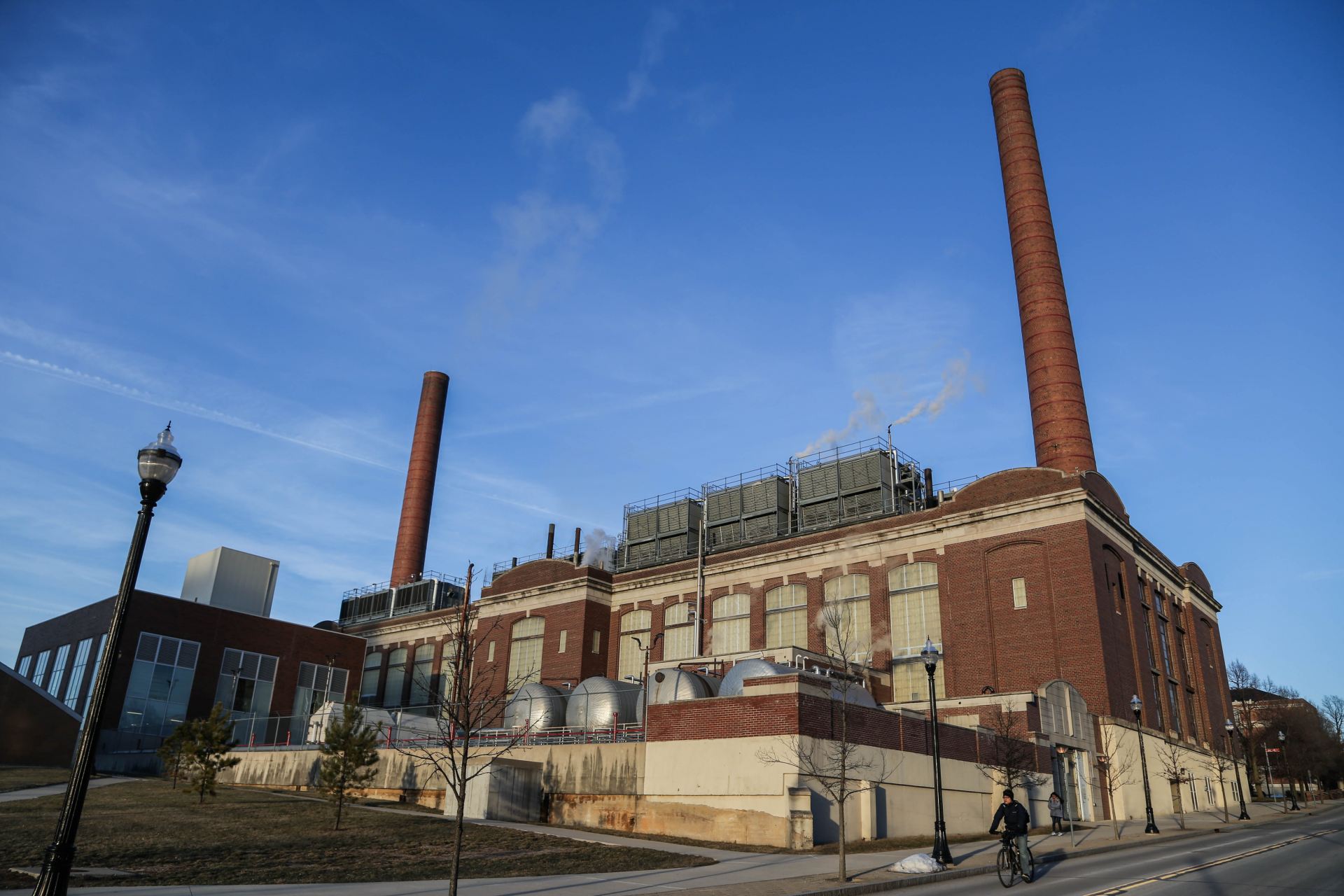Ohio State students, faculty and staff had the opportunity to voice concerns Wednesday over the recently approved power plant to be built on West Campus at a date not yet determined.
Ohio State’s Sustainability Institute hosted an online informational session for “sustainability student leaders” about the combined heat and power plant which was approved for construction Sept. 17. A panel of energy and sustainability specialists answered selected questions about the university’s current heat and electricity infrastructure and the role of the new natural gas-powered plant.
Scott Potter, senior director of the comprehensive energy management project at Ohio State, said the amount of energy the university consumes, the way it gets its energy and the type of energy it needs informed the decision to construct the combined heat and power plant, as opposed to relying more on renewable energy sources.
“We are essentially a small city,” Potter said.
Potter said although renewable energy sources such as wind energy are used for some electricity needs at the university, Ohio State primarily needs a source of thermal energy — a way to heat buildings, especially during the winter.
“We could switch to 100 percent renewable electricity right now, but we’d still have the need for the thermal power,” Potter said.
A combined heat and power plant harnesses thermal energy, which is produced as a byproduct of electricity generation. Without a combined heat and power function, that thermal energy would otherwise go to waste.
Potter said the McCracken Power Plant can no longer meet the university’s heating needs. The plant, which has been operational for about 100 years, was originally coal-powered but was converted to natural gas in 2007, according to a document released by Ohio State.
Most of Ohio State’s current power comes from private electric companies, including Blue Creek Wind Farm. In the fiscal year 2019, 14 percent of the university’s electricity came from the wind farm, according to the document. Energy generated off campus almost doubles in price due to the cost of transportation, Potter said.
Mike Shelton, associate director of the sustainability institute, said the return on investment for renewable energy, such as solar panels, also makes the option less cost-effective for the university. However, he said the university will work to fill the gap between energy produced by the combined heat and power plant and the university’s needs with renewable energy purchased on the market.
Shelton said in the fiscal year 2019, one-third of the university’s purchased energy came from coal.
“If we can displace those emissions from the grid, then we will have an immediate reduction on our overall carbon footprint for the university through the [plant],” Shelton said.
The combined heat and power plant faced criticism from Ohio State students and faculty who want the university to rely more on renewable energy sources, such as geothermal heating. Potter said geothermal energy would not meet the heating needs of the university and requires more land than is available in the campus area.
Ohio State has 411 geothermal wells underneath the South Oval and Hale Green that account for less than one percent of the university’s energy supply, the document states.
Others raised concerns about the environmental impact of fracking gas for the plant. Potter said the environmental impact of the plant is a measure of the plant itself, not the process of fracking gas that occurs away from campus.
“Unfortunately, as further discussed below, meeting heating and process steam demand with renewable energy sources is not currently feasible — this is a global challenge not isolated to Ohio State,” the document states.
Elena Irwin, faculty director of the Sustainability Institute at Ohio State and moderator of the panel, said she acknowledged students’ concerns that the power plant does not address the university’s environmental impact enough.
“[Zero carbon emissions] is not something that happens overnight. It’s not something that happens all at once,” Irwin said. “It is an incremental process. And it is one, like any sustainability issue, is not black and white.”



